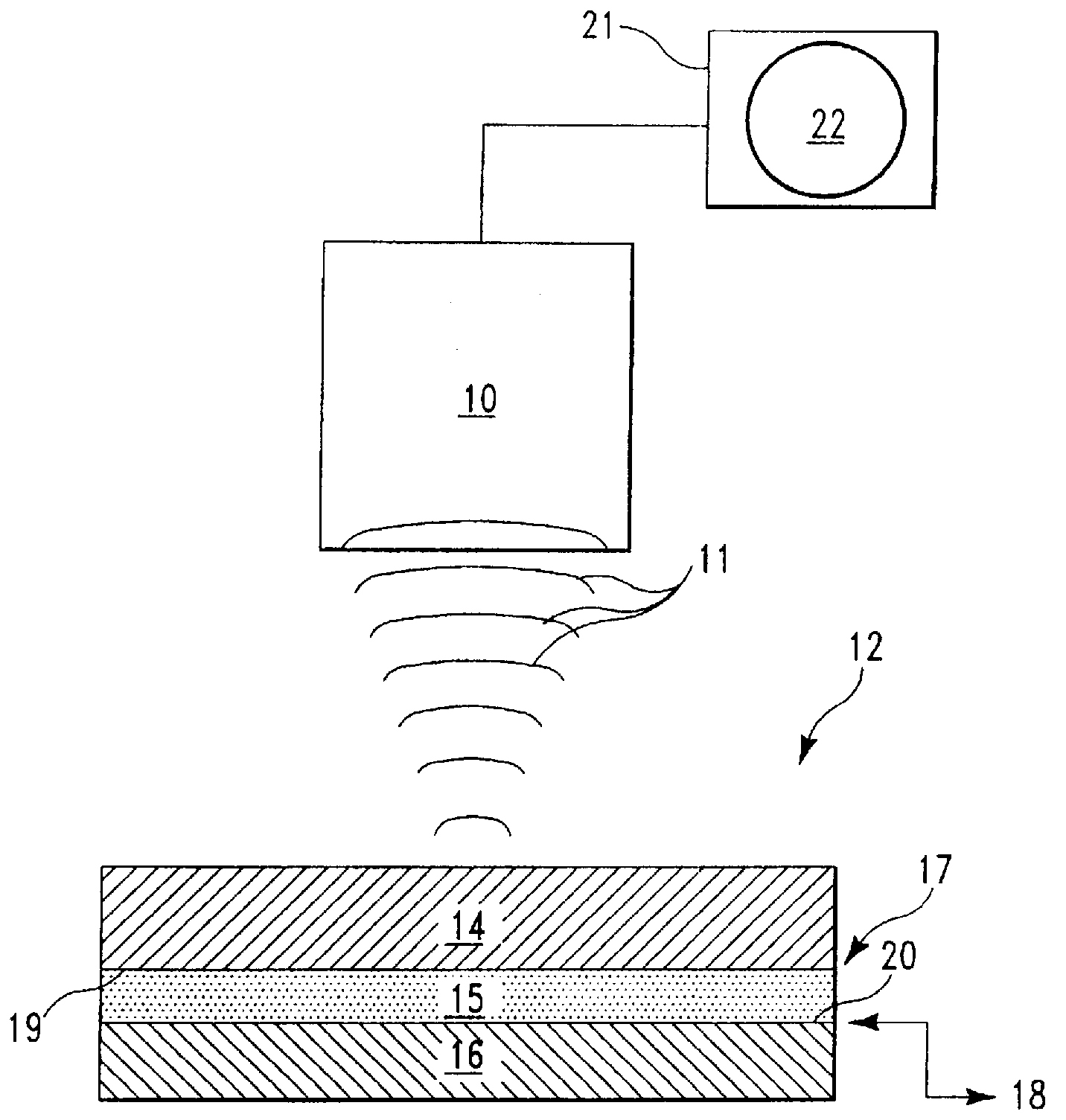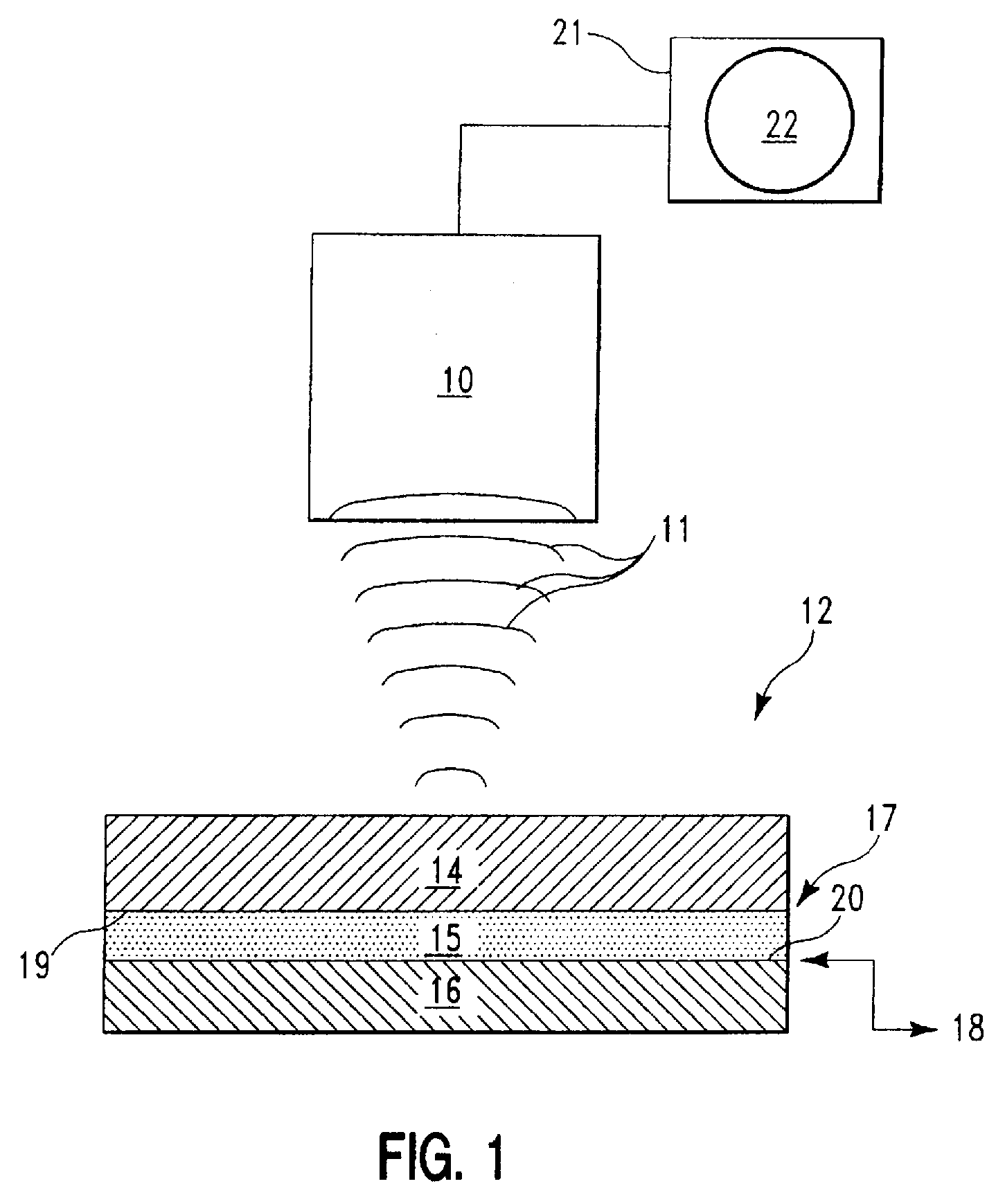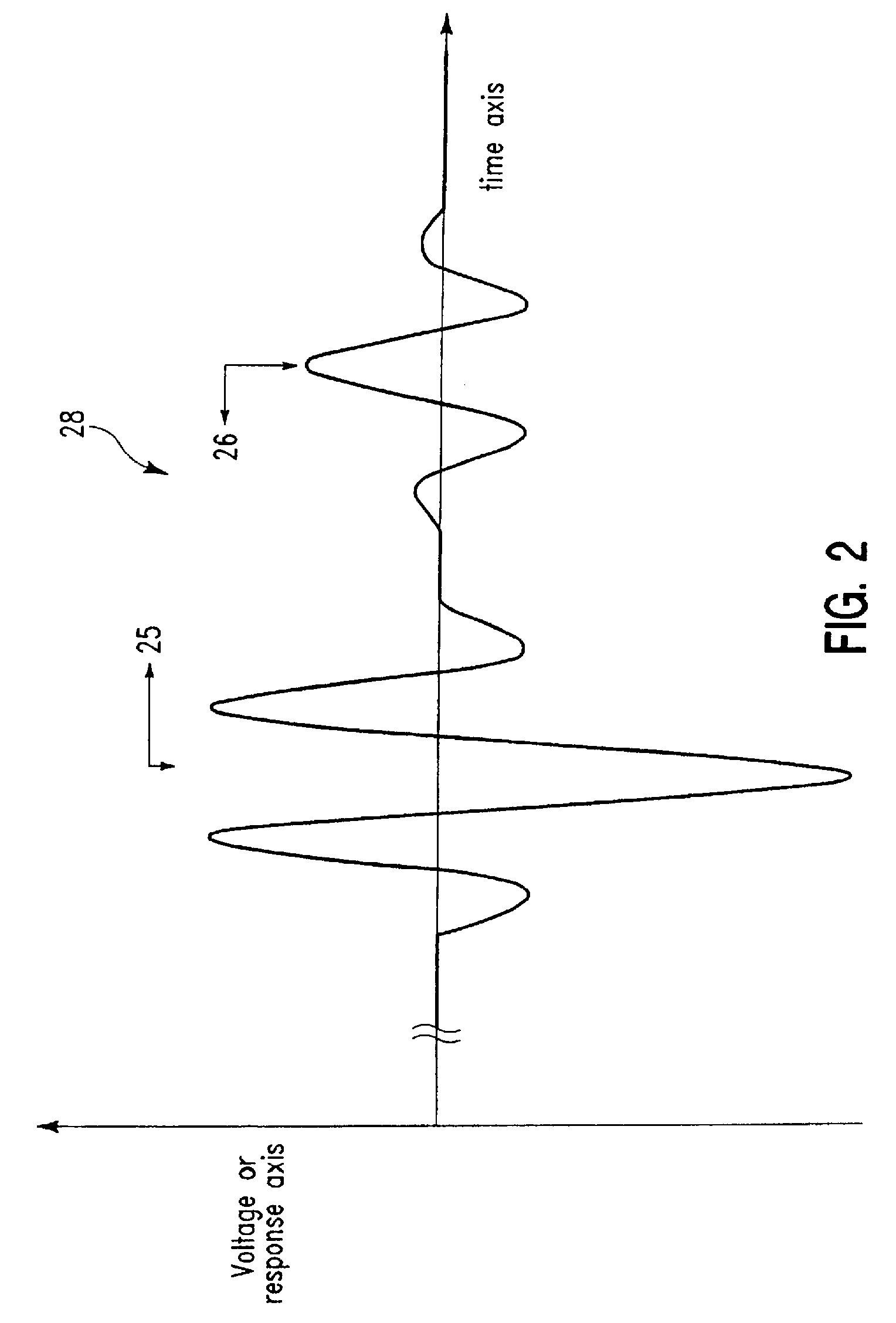Method for measuring thin layers in solid state devices
a solid-state device and thin-layer technology, applied in the direction of mechanical measuring arrangements, instruments, using mechanical means, etc., can solve the problems of destroying, time-consuming methods, and inability to optically measure the thickness of the bonding layer,
- Summary
- Abstract
- Description
- Claims
- Application Information
AI Technical Summary
Benefits of technology
Problems solved by technology
Method used
Image
Examples
Embodiment Construction
[0023]FIG. 1 schematically illustrates a commercially available acoustic microscope 10 coupled to a computer 21 provided with an oscilloscope display 22. The microscope 10 is designed to transmit an acoustic wave 11 to a layered body 12 and to receive and process the echoes reflected there from. The layered body 12 is, for example, comprised of an upper layer 14 formed of a first material such as SiSiC, that is secured to a lower layer 16, formed, for example, of silicon, by an intermediate bonding layer 15, formed, for example, of a bonding material such as a thermal paste. More particularly, the bonding layer 15 forms a reflective or echoing interface 17 with the bottom surface 19 of the upper layer 14 and a subsequent reflective or echoing interface 18 with the top surface 20 of the lower layer 16. When an acoustic wave is applied to the body 12 the wave is reflected from each of the two interfaces 17 and 18 as shown in FIG. 2. Such reflected waves will hereinafter be referred to...
PUM
 Login to View More
Login to View More Abstract
Description
Claims
Application Information
 Login to View More
Login to View More - R&D
- Intellectual Property
- Life Sciences
- Materials
- Tech Scout
- Unparalleled Data Quality
- Higher Quality Content
- 60% Fewer Hallucinations
Browse by: Latest US Patents, China's latest patents, Technical Efficacy Thesaurus, Application Domain, Technology Topic, Popular Technical Reports.
© 2025 PatSnap. All rights reserved.Legal|Privacy policy|Modern Slavery Act Transparency Statement|Sitemap|About US| Contact US: help@patsnap.com



